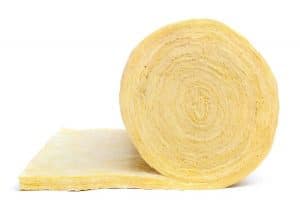 Modified shipping containers are today used for a wide variety of purposes. Insulating a shipping container is essential for keeping warm during the winter and cool during the summer months. How these shipping containers are insulated, though, depends on two factors:
Modified shipping containers are today used for a wide variety of purposes. Insulating a shipping container is essential for keeping warm during the winter and cool during the summer months. How these shipping containers are insulated, though, depends on two factors:
- The climate in which the containers are going to be placed
- How these containers are going to be used
Let us take a look at the importance of insulating your shipping container.
Why Insulate Your Shipping Container?
Proper insulation improves the energy efficiency of any structure. With the correct type and thickness of insulation, you can drastically decrease the amount of time your air conditioner or heating systems are running, thus reducing your power consumption and as a result, your utility bill.
The steel walls of a steel shipping container tend to get extremely hot in the summer and equally as cold in the winter. The type and amount of insulation required depends on the climate and function of the container. Without proper insulation, it can become very uncomfortable to stay in a shipping container if the container is used as an office or workshop. Even if the container is used for storage, temperature control may be required depending on what will be stored inside.
Furthermore, insulating a shipping container also helps improve the acoustics inside. Because of the hollowed shape of any shipping container, there is an echo created upon making any sound. Proper insulation inside a shipping container can dramatically reduce any noise problems.
Types of Insulation
Styrofoam, spray foam, and batt are the three main types of insulation used in shipping containers. Let us look at each of them:
Styrofoam: Polystyrene (commonly known as Styrofoam) is ideal for insulating storage containers. It is a fast, easy, and cost-effective way of insulating a storage shipping container and also helps reduce sound. Conventional climate-controlled storage containers typically cone with an inch of Styrofoam insulation already installed.
Spray Foam: This is ideal for temperature-sensitive enclosures. It is not considered to be the most aesthetically pleasing insulation, and it is sprayed directly onto the container walls. The spray foam then sets as a water-resistant, hard covering. Spray foam is a more expensive insulation option.
Batt (or Roll): This insulation material is ideal for living spaces and offices. Batt is made up of finely woven strands of mineral wool, plastic fibers, or glass, and it is the industry standard for insulation used in residential and office containers.
The quickest way to insulate shipping containers is to put in insulation panels that are readily available in predefined sizes, making it easy to fit them. Blanket insulation is also considered to be one of the cheapest options available. Eco-friendly insulation materials are also available such as cotton, wool, and mud.
So when you are buying a shipping container, keep in mind the various insulation options there are as only with proper insulation can you successfully convert a container into a comfortable living or office space.
For more information on modifying a shipping container contact Carolina Containers at 919-562-9187.

Very significant Information for us, I have think the representation of this Information is actually superb one. This is my first visit to your site. Buy Shipping Container
ReplyDelete